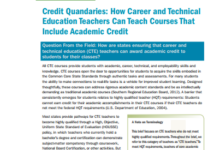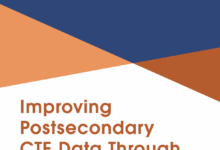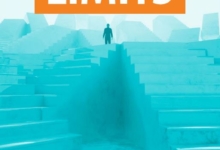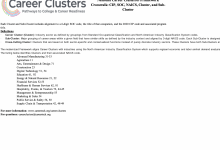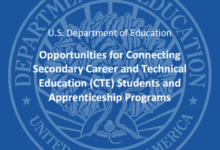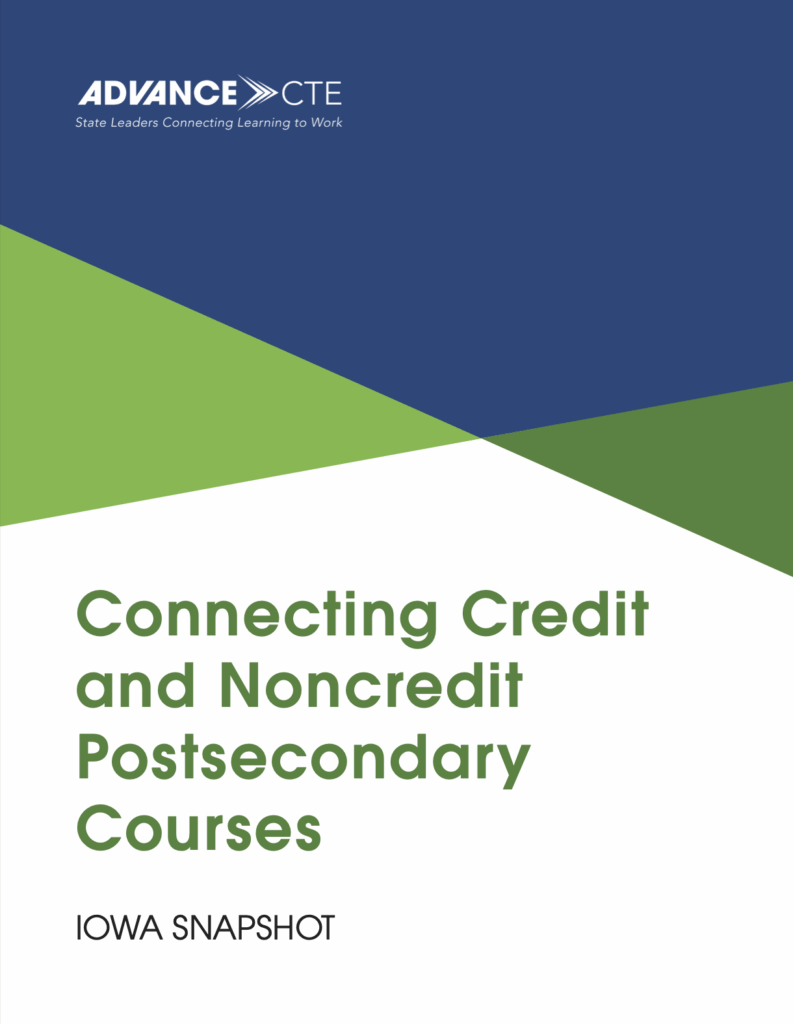This brief highlights work in Iowa by the Iowa Department of Education to clarify and create postsecondary CTE data elements and linkages through the integration of credit-bearing secondary, credit-bearing postsecondary, and noncredit CTE courses into a single database. Iowa broke down long-standing silos between credit and noncredit CTE data systems, creating a unified, learner-centered view of career pathways. By standardizing data, automating connections, and building user-friendly tools, the state empowers educators, policymakers, and learners with clearer insights to strengthen workforce opportunities.
Read this resource to explore:
- Key state outcomes and outputs
- Starting steps and lessons learned from system improvement journey
- Priority areas for sustainability
This brief is part of Strengthening the Culture of CTE Data Use in Postsecondary Education series documenting the journey of four states participating in Advance CTE’s Advancing Postsecondary CTE Data Quality Initiative (PDI). Through funding and technical assistance, Delaware, Iowa, New Mexico, and South Carolina examined critical problems of practice, developed resources, and implemented innovative solutions to improve the quality and use of postsecondary CTE.
This resource was developed with the generous support of ECMC Foundation.

